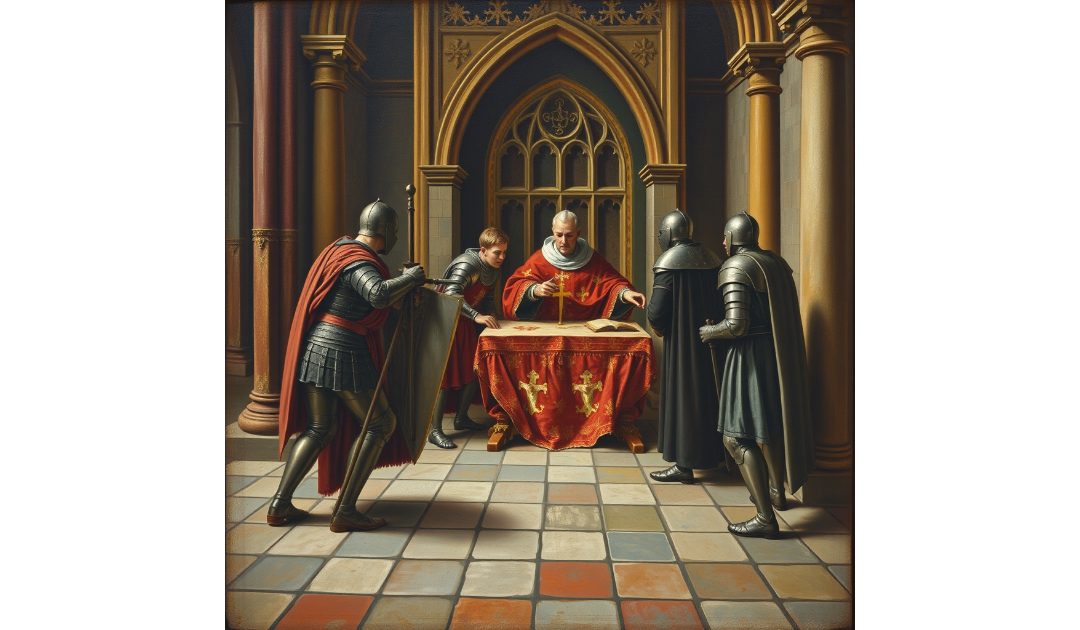On 29th December 1170 Archbishop Thomas Becket was slain at the High Alter of Canturbury Cathedral by four knights. His is a story that would have been well known to my ancestor, Sir Anthony Standen, Elizabethan spy and the hero of my book, The Spy who Sank the Armada. But we must get back to Becket.
Thomas Becket, born around 1119 in London, was a significant figure in medieval England, known for his role as Archbishop of Canterbury and his tumultuous relationship with King Henry II. Becket was educated at the prestigious Merton Priory and later in Paris, where he developed a keen intellect and a deep understanding of law and theology. His early career was marked by his service as a clerk and then as chancellor to Henry II, where he gained the king’s favor and enjoyed a life of luxury and power.
In 1162, Becket was appointed Archbishop of Canterbury, a position that dramatically altered the course of his life. Upon assuming the role, he underwent a profound transformation, embracing the responsibilities of his office with fervor and prioritizing the interests of the Church over royal authority. This shift created a rift between him and Henry II, who had expected Becket to remain an ally and support the crown’s influence over the Church.
The conflict escalated over issues of church governance and the rights of the clergy. Becket staunchly defended the autonomy of the Church, opposing the king’s attempts to exert control over ecclesiastical appointments and legal matters involving clergy. This resistance culminated in a series of confrontations, leading to Becket’s temporary exile in France from 1164 to 1170. During this period, he sought support from the Pope and other European leaders, solidifying his position as a champion of ecclesiastical independence.
After several years in exile, Becket returned to England in 1170, but tensions remained high. His return was marked by a renewed commitment to his role as Archbishop, and he continued to challenge the king’s authority. The situation reached a tragic climax in December 1170 when four of Henry’s knights, interpreting the king’s frustrated remarks about Becket’s defiance as a royal command, traveled to Canterbury and brutally murdered him in the cathedral.
Becket’s assassination shocked the medieval world and led to his immediate veneration as a martyr. He was canonized by Pope Alexander III in 1173, and his tomb at Canterbury Cathedral became a major pilgrimage site, attracting thousands of devotees. The event also had significant political repercussions, forcing Henry II to reconcile with the Church and leading to a gradual shift in the balance of power between the monarchy and ecclesiastical authority.
Thomas Becket’s legacy endures as a symbol of the struggle for religious independence and the complexities of church-state relations. His life and martyrdom have inspired countless works of literature, art, and drama, most notably T.S. Eliot’s play “Murder in the Cathedral,” which explores the moral and ethical dilemmas surrounding his life and death.

